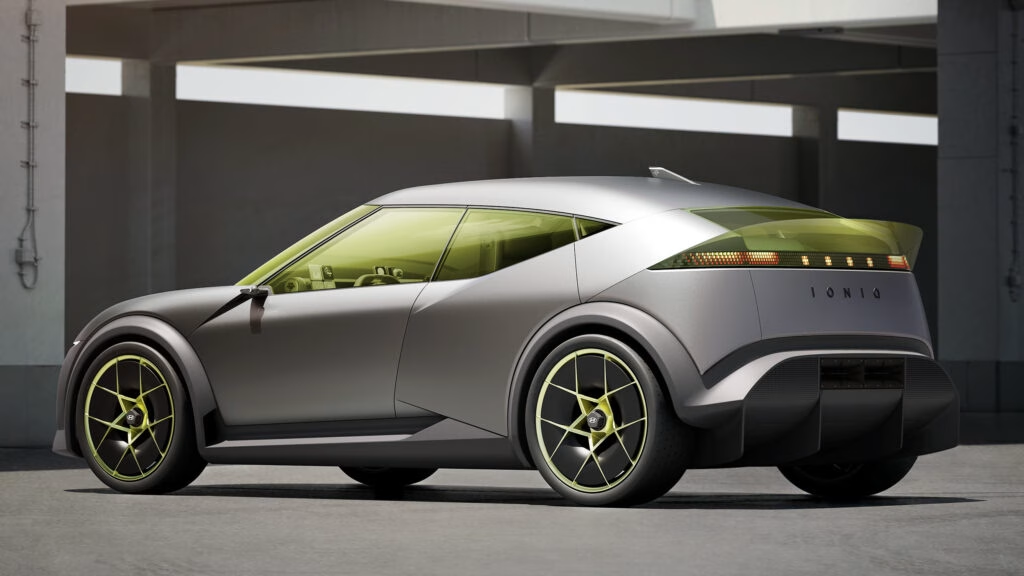What Makes the Hyundai Concept Three Stand Out Among Electric Hatchbacks?
Hyundai’s latest reveal, the Concept Three, has turned heads at the Munich Motor Show—and for good reason. This isn’t just another electric hatchback; it’s Hyundai’s bold answer to the upcoming Volkswagen ID. Golf and a clear statement that the brand is ready to shake things up in the compact EV segment. At 4,288 mm long, it’s right in the sweet spot for city driving, but its coupe-like silhouette, sharply sloped roofline, and low-slung nose give it a presence that’s anything but ordinary. If you’ve ever wished the Veloster had a glow-up for the electric era (and maybe a bit more practicality), you’ll want to keep an eye on this one.
How Close Is the Concept Three to the Production Ioniq 3?
Automakers love to tease us with wild concepts, only to deliver watered-down versions when it’s time for production. But Hyundai’s track record suggests they’re serious about keeping the Concept Three’s spirit alive in the Ioniq 3, which is set to start European production in 2027. Sure, some of the show-car flourishes—like those dramatic gullwing rear doors—are unlikely to make the cut for everyday drivers. But design boss Simon Loasby has hinted that key elements, such as the muscular fender flares, transparent rear spoiler, and aggressive rear diffuser, could survive in sportier N versions. In other words, what you see now isn’t just a pipe dream.
What’s Unique About Hyundai’s Aero Hatch Design Language?
Hyundai calls the Concept Three an Aero Hatch, and it’s not just marketing fluff. The design is all about blending performance with practicality. The intersecting lines and upright rear window aren’t just for show—they’re part of Hyundai’s new ‘Art of Steel’ language, which aims to create visual tension and aerodynamic efficiency. The result? A car that looks fast even when it’s parked, but still offers the kind of cargo space and rear-seat access you actually need. It’s a clever balance, and it shows Hyundai’s willingness to rethink the traditional hatchback formula.
How Does the Lighting Technology Set the Concept Three Apart?
Lighting has quietly become one of Hyundai’s signature moves, and the Concept Three takes it up a notch. The car features advanced Parametric Pixel lighting at both ends, but with a twist: the upper pixels are brighter, creating a gradient effect that’s both futuristic and functional. This isn’t just about looking cool at night (though it certainly does); it’s about giving each Hyundai a unique visual identity. According to recent industry research, distinctive lighting is now a top factor in brand recognition, and Hyundai’s approach puts them ahead of the curve.
What Surprises Await Inside the Concept Three?
Step inside, and you’ll notice Hyundai has thrown out the rulebook. Gone is the oversized central touchscreen that’s become standard in most EVs. Instead, drivers can bring their own widgets to mount on the dashboard, creating a personalized cockpit experience. It’s a bold move—one that could appeal to tech-savvy drivers who want more control over their digital environment. The pod-like bucket seats are upholstered in sustainable fabrics, underscoring Hyundai’s commitment to eco-friendly materials. And yes, there’s a quirky handle on the console that looks suspiciously like a built-in Dust Buster. Love it or hate it, it’s memorable.
What Can We Expect in Terms of Performance and Range?
Hyundai hasn’t spilled all the technical details yet, but there are some educated guesses we can make. The production Ioniq 3 will likely share its platform with the Kia EV4, meaning it’ll use a 400-volt electrical system (not the faster-charging 800-volt setup found in pricier models). Expect both single and dual-motor configurations, giving buyers a choice between efficiency and all-wheel-drive performance. Industry insiders predict two battery options, with the top-tier model aiming for around 390 miles (628 km) of range—putting it right in line with the best in class. For context, that’s more than enough for most weekly commutes and even the occasional road trip.
How Does the Concept Three Stack Up Against Rivals Like the VW ID. Golf?
Competition in the compact EV space is heating up fast. The Volkswagen ID. Golf is the obvious benchmark, but Hyundai’s Concept Three brings a sportier, more distinctive design to the table. Where the VW plays it safe, Hyundai is betting on boldness—both in looks and in cabin experience. The focus on customizable tech and sustainable materials could give it an edge with younger buyers and early EV adopters. Plus, if Hyundai follows through with a high-performance N variant, it could attract driving enthusiasts who’ve felt left out of the electric hatchback conversation.
What’s the Real-World Impact for Everyday Drivers?
Design flourishes and tech features are great, but what does all this mean for you? If you’re in the market for a compact EV in the next few years, the Ioniq 3 promises to offer a blend of style, practicality, and range that’s hard to beat. The customizable interior could make daily commutes feel less monotonous, while the projected range means fewer charging stops. And with European production slated for 2027, Hyundai is signaling a commitment to local manufacturing—which could translate to better availability and potentially lower prices for European buyers.
The big takeaway? Hyundai’s Concept Three isn’t about perfection—it’s about smarter adjustments. Start with one change this week, and you’ll likely spot the difference by month’s end.

